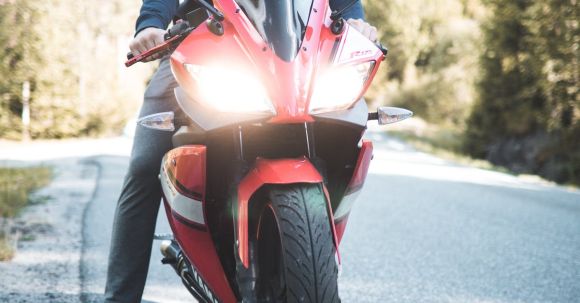Riding a motorcycle is an exhilarating experience, but it also requires extra caution and awareness on the road. One particular challenge that motorcyclists face is navigating railroad crossings. These crossings can be treacherous if not approached with the proper knowledge and precautions. In this article, we will discuss some essential tips for safely navigating railroad crossings on a motorcycle.
Understanding the Risks
Before we delve into the specifics, it is crucial to understand the potential risks associated with railroad crossings. Trains are heavy, fast-moving vehicles that take a significant distance to come to a complete stop. The sheer force of a collision with a train can be catastrophic for a motorcycle rider. Therefore, it is vital to approach railroad crossings with care and respect.
Approaching the Crossing
As you approach a railroad crossing on your motorcycle, it is essential to slow down and assess the situation. Look for signs that indicate an upcoming crossing, such as warning lights, barriers, or signage. Make sure to give yourself ample time to react and adjust your speed accordingly.
Checking for Oncoming Trains
Before proceeding across the railroad tracks, it is crucial to check for any oncoming trains. Look both ways along the tracks and listen for any sounds that might indicate the presence of a train. It’s important to note that trains can be deceptively quiet, especially when there is background noise from traffic or other sources.
Crossing at a Right Angle
When it’s time to cross the tracks, do so at a right angle. Crossing at an angle increases the risk of your motorcycle getting caught in the tracks, which can lead to a loss of balance or a crash. Maintaining a perpendicular angle minimizes this risk and allows for a smoother transition.
Navigating Uneven Surfaces
Railroad crossings often have uneven surfaces, with gaps between the tracks and the surrounding road. These gaps can be hazardous for motorcycles, as they can cause instability and jolts to the rider. To navigate these uneven surfaces safely, reduce your speed and try to keep a firm grip on the handlebars. Maintain a relaxed but firm posture to absorb any shocks or vibrations.
Avoiding Stopping on the Tracks
Under no circumstances should you ever stop on the railroad tracks. Stopping on the tracks not only puts you at risk of a collision with an oncoming train but also prevents other vehicles behind you from safely crossing. If you find yourself unable to cross the tracks due to traffic or other reasons, wait until it is safe to do so or find an alternative route.
Maintaining Vigilance
Even after you have successfully crossed the railroad tracks, it is essential to remain vigilant. Trains can approach from either direction at any time, so continue to look and listen for any signs of an oncoming train. Additionally, be aware of any potential hazards on the road, such as loose gravel or debris, which can pose a risk to motorcycle stability.
Conclusion: Safety First
When it comes to navigating railroad crossings on a motorcycle, safety should always be the top priority. By understanding the risks, approaching the crossing with caution, checking for oncoming trains, crossing at a right angle, navigating uneven surfaces, and maintaining vigilance, you can significantly reduce the chances of an accident. Remember, it’s better to be safe than sorry when it comes to sharing the road with trains.
